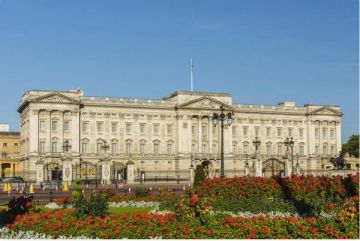
Little Holland House is an Arts and Crafts style house built in 1902 by Frank Dickinson. Dickinson (1874-1961), was an artist and designer who was inspired by the writings of John Ruskin and William Morris to create a house filled with handcrafted art in traditional styles and materials.
The interior features paintings, furniture, metalwork, friezes, and materials all created by Dickinson. The style is best described as a blend of Arts and Crafts, Glasgow School, and innovative Art Nouveau design.
Not only did Dickinson design the house, he built it by hand. This was perhaps partly because of the philosophy of Ruskin and Morris favoured hand-crafted work by artisans, but equally, because Dickinson lacked the money to hire someone to build it for him! Dickinson drew his inspiration by studying trade journals and built the house and its furniture with the help of his 2 brothers and a hired workman.
Dickinson lived at Little Holland House until his death in 1961. The house was restored by the local council in 1972 and opened as a museum 2 years later. It has been listed Grade II* for its heritage value.
The 'other' Little Holland House
As a side-note, there was another Little Holland House in Greater London. The original was in Kensington and served as the dower house for Holland House. Financial problems forced the 3rd Earl of Ilmington to sell the house and it was torn down in 1875 to make way for Melbury Road.
The easiest access by public transport is by rail, to Carshalton Beeches station, a 3-minute walk away. Road access is via the B278 but be aware that there is no off-street parking available.
About Little Holland House
Address: 40 Beeches Avenue,
Carshalton,
Greater London,
England, SM5 3LW
Attraction Type: Museum
Location: On the B278, 1 mile south of the A232 junction
Website: Little Holland House
Location
map
OS: TQ275 634
Photo Credit: George Rex, licensed for reuse under the Creative Commons Licence
HERITAGE
 We've 'tagged' this attraction information to help you find related historic attractions and learn more about major time periods mentioned.
We've 'tagged' this attraction information to help you find related historic attractions and learn more about major time periods mentioned.
Find other attractions tagged with:
Arts and Crafts (Architecture) - William Morris (Person) -
NEARBY HISTORIC ATTRACTIONS
Heritage Rated from 1- 5 (low to exceptional) on historic interest
Honeywood Museum - 0.7 miles (Museum) ![]()
Carew Manor & Dovecote - 1.8 miles (Historic Building) ![]()
Lumley Chapel - 2 miles (Historic Church) ![]()
Whitehall Tudor House Museum - 2.1 miles (Museum) ![]()
Wandle Industrial Museum - 3.2 miles (Museum) ![]()
Morden Hall Park - 3.3 miles (Garden) ![]()
Wimbledon Lawn Tennis Museum - 4.7 miles (Museum) ![]()
Chaldon, St Peter and St Paul Church - 5.5 miles (Historic Church) ![]()
Nearest Holiday Cottages to Little Holland House:
Leaves Green, Greater London
Sleeps: 6
Stay from: £857 - 3127
Holmbury St Mary, Surrey
Sleeps: 9
Stay from: £865 - 4619
More self catering near Little Holland House



